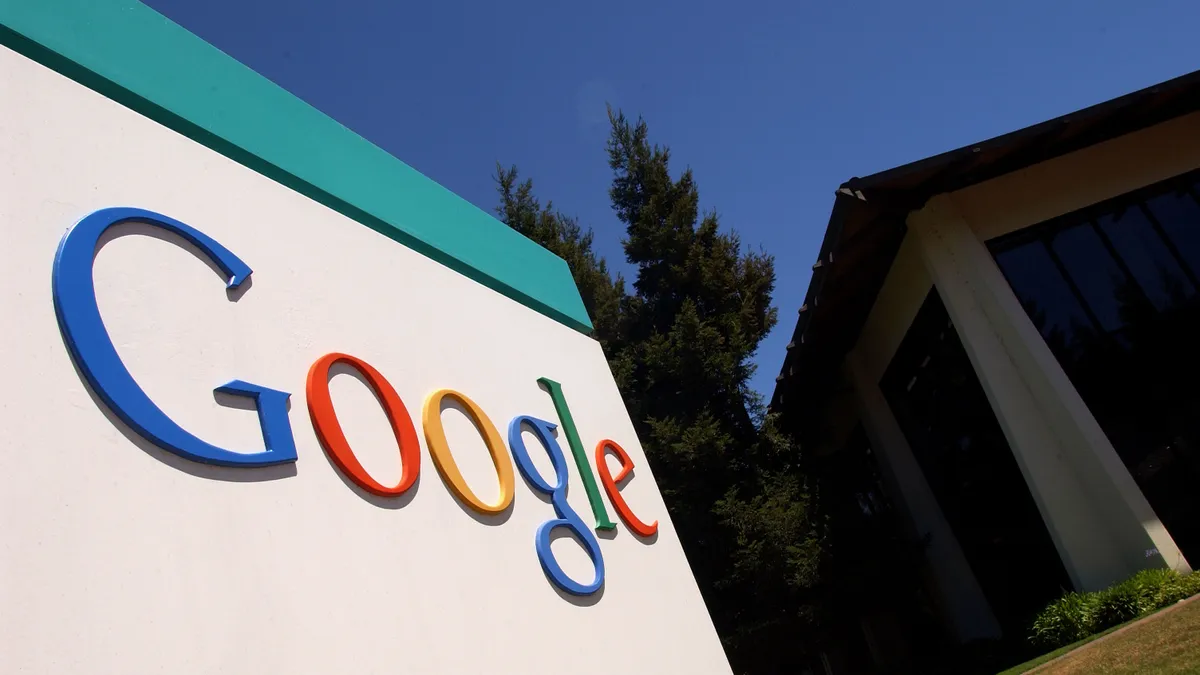Google shared greater detail on how it’s broadening search beyond the traditional text bar at its third annual Search On event Wednesday. Richer offerings related to visual, language and multimedia-based search are meant to create a “natural and intuitive” experience that’s more in line with the ways people actually think, executives said.
“Already, searching with text is indispensable. Now, the age of visual search is here,” said Prabhakar Raghavan, senior vice president at Google, to kick off the livestreamed presentation. “A camera isn't just a content-creation device. It's a powerful way to access information and understand the world around you.”
These changes also come as the tech giant — the search category’s top dog — contends with younger consumers flocking to video and creator-oriented mobile apps like TikTok when exploring the web while brands follow suit.
“It’s no secret that TikTok is Gen Z’s preferred search platform for all things ranging from food to beauty products to clothing,” said Noam Dorros, an analyst at Gartner, over email. “So, Google understands what drives consumers to platforms like TikTok, and evolves accordingly — hence this advance towards more natural, intuitive exploration with multimedia search.”
Time will tell how much Google’s newfangled ideas stick, but the company owns a suite of products, from Maps to its Lens camera technology, that could be powerful when combined for search purposes. For marketers that have continued to prioritize text-based tactics, Search On could serve as a wake-up call.
“Brands that continue to focus on text search are doing their digital marketing plans a disservice by not fully understanding how people consume information today,” said Dorros. “A focus on strictly text-based strategies is going to eventually cause marketers to lose visibility and, as a result, consumers, to those brands standing on the forefront and optimizing towards those multimedia strategic initiatives.”
New ways to query
One way Google is advancing its mainstay text search is by predicting what a person might be interested in based on general queries. In an example highlighted during the show, someone planning a trip to Mexico might receive an autofill suggestion with greater specificity, such as “best cities in Mexico for families,” and then see Oaxaca on a list of recommendations. Rather than just displaying the location and a static image, clicking the result spotlights relevant information like user-generated content posted to other platforms about the city.
For the food category, consumers on the hunt for particular dishes will now be able to surface nearby restaurants with the exact meal they’re looking for rather than combing through menus individually. Google is also trying to make digital menus easier to navigate and more information-rich, as well as provide a deeper view into what restaurants have to offer beyond flat star ratings, such as descriptions of the atmosphere, interior photos and more immersive Maps views.
“Some of us grew up with using web in a way where you're typing in a restaurant query or things like that, but that's really not how the incoming generation of users might be interacting with products,” said Sophia Lin, director and general manager of Google’s food vertical, in a pre-show interview.
Multisearch — a functionality introduced earlier this year that allows users to apply text and image queries simultaneously — was promoted as another means to enhance web deep dives. Multisearch near me, which layers in an additional location-based element by identifying nearby locales carrying what the user is looking for, will become more widely available in English later this fall.
Google at the same is expanding its shopping footprint, adding features like 3D models for sneakers; a trending products page; a shop-the-look format; more personalized recommendations; and buying guides for high-consideration purchases. These developments speak to how Google could attract more interest from merchant categories that are making the jump to digital and desiring omnichannel strategies, a shift that accelerated under the pandemic.
“We've been exploring food for a very long time. Restaurants are one of the most common queries we've gotten for years and years,” said Lin. “What's different now is really how advanced machine learning has gotten, as well as multitasking. What we were really looking at is how we can flex tech to make the experience of finding a food lot easier.”
Searching for growth
Google’s quest to revamp search beyond the usual list of blue links comes as some of its big business drivers encounter headwinds. YouTube, its video-sharing platform, is in a rut and investing heavily in a new TikTok-like format called Shorts. Search and other bets remain Google’s largest revenue generator, drawing $40.69 billion in the second quarter, but ad growth generally is slowing in a tough macroeconomic environment and amid stiffer competition.
Beyond TikTok, consumers are turning to other sites to find stuff, which could pose a long-term problem for Google. Amazon is the leading hub for online shopping and has moved aggressively into ads, ramping up its rivalry with Google. People seeking in-depth, community-led discussions rely more frequently on sites like Reddit, a potential result of dissatisfaction with Google search. At Search On, Google unveiled a new dedicated “Discussions and forums” tab that will appear alongside existing ones for categories like news and images.
“There is no question Google maintains a pulse on growing competitors, especially given how rapidly the [digital] landscape advances — anything short of that would not have allowed them to be the leading search engine today,” said Dorros.























